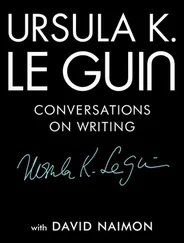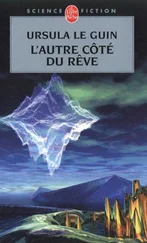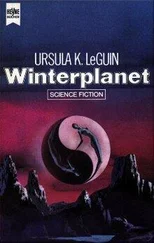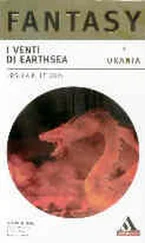1959
Spends summer at Berkeley with parents and Karl’s family. The Orsinian poem “Folksong from the Montayna Province” appears in the fall issue of the journal Prairie Poet. It is her first published work. Second child Caroline DuPree Le Guin is born, November 4. Mother publishes The Inland Whale , a book of retold legends from California Indians, including the title story, which was learned from Yurok storyteller (and frequent guest at Kishamish) Robert Spott.
1960
Father dies in Paris on October 5 after conducting an anthropology conference in Austria the previous week. Later refers to this as the time when she “came of age, rather belatedly, at age 31.”
1961
Mother publishes her most famous work, Ishi in Two Worlds , based on her husband’s memories and on her own research. Le Guin’s Orsinian story “An die Musik” is published in the summer issue of Western Humanities Review ; she is paid five contributor’s copies. The same week it is accepted, she also makes her first commercial sale: the time-travel story “April in Paris” is accepted by editor Cele Goldsmith Lalli for Fantastic magazine, for which Le Guin is paid $30. Rewrites Malafrena .
1962
Encouraged by a friend, begins reading science fiction writers Philip K. Dick, Harlan Ellison, Theodore Sturgeon, and Vonda McIntyre.
1964
Youngest child Theodore Alfred (Theo) Le Guin is born, June 4. (While the children are young she writes mostly after nine at night.) Moves for the academic year to Palo Alto, California, where Charles is a fellow at the Center for Advanced Study in the Behavioral Sciences. Writes her first science fiction novel, Rocannon’s World. Her turn to science fiction is partly stimulated by reading the American author Cordwainer Smith and her resultant discovery that the genre has become a vehicle for inward as well as outward exploration. In a 1986 interview, she will explain, “To me encountering his works was like a door opening. There is one story of his called ‘Alpha Ralpha Boulevard’ that was as important to me as reading Pasternak for the first time.”
1966
Acting as her own agent, sells Rocannon’s World to Donald A. Wollheim at Ace Books. It is published as half of a back-to-back edition, known as an Ace Double, with Avram Davidson’s The Kar-Chee Reign . Wollheim speaks proudly of finding Le Guin’s novel in the slush pile (of manuscripts sent without an agent). Soon afterward, Terry Carr creates the Ace Science Fiction Specials line to feature work by Le Guin, Joanna Russ, and R. A. Lafferty. The character Rocannon is a native of a world called Hain by its inhabitants and Davenant by others. In later books set in the same universe Hain is identified as the oldest human world, and the others (including Terra) as its colonies or (as in the case of Gethen) its experiments. Planet of Exile is published in October as half of an Ace Double with Thomas M. Disch’s Mankind Under the Leash .
1967
City of Illusions is published by Ace Books.
1968
Writes to literary agent Virginia Kidd, herself a writer and editor of science fiction and poetry, asking her to try to sell hardcover rights to a new novel, The Left Hand of Darkness . Kidd replies that she will, but only if she can also represent the rest of Le Guin’s work. The two work together (though they meet in person only four times) until Kidd’s death in 2003. Publishes letter, along with eighty-one other science fiction writers (including Joanna Russ, Samuel R. Delany, and Gene Roddenberry), in Galaxy magazine in June protesting U.S. involvement in Vietnam. An opposing prowar letter is signed by seventy-two writers, including Robert A. Heinlein, John W. Campbell, and Marion Zimmer Bradley. In fall, moves to England as part of Charles’s sabbatical. During that time she writes “The Word for World Is Forest,” set in the Hainish universe but depicting some of the moral issues of the Vietnam War. Fantasy novel A Wizard of Earthsea is published in November by Parnassus Books.
1969
A Wizard of Earthsea wins the Boston Globe – Horn Book Award for children’s literature. The Left Hand of Darkness is published by Ace Books as an Ace Science Fiction Special in March. The book’s vision of androgyny is criticized by some feminists as overly cautious, a critique to which Le Guin responds defensively at first and then with a serious rethinking of her concept of gender in essays such as “Is Gender Necessary? Redux” (1976, revised 1987) and the story “Coming of Age in Karhide” (1995). The story “Nine Lives” appears in Playboy in November with the byline U. K. Le Guin. The initials are a deliberate ploy by Virginia Kidd, given the gender policies of the magazine. After the story is accepted, the magazine editors ask if they can keep the name in that form to veil the author’s gender from readers. Le Guin agrees, in part because of the large payment the magazine offers, but when asked for an autobiographical statement offers the following, which Playboy prints: “The stories of U. K. Le Guin were not written by U. K. Le Guin but by another person of the same name.” Children’s writer and critic Eleanor Cameron writes in praise of A Wizard of Earthsea and begins a decades-long correspondence with Le Guin. The two writers are both, at the time, beginning to come to terms with feminism and are working at learning how to write as women and about female protagonists. This friendship with an older writer presages the many supportive relationships Le Guin is to form with younger women writers such as Vonda McIntyre, Karen Joy Fowler, and Molly Gloss. Mother remarries, to artist and art psychotherapist John Quinn, who is forty-three years her junior, on December 14.
1970
The Left Hand of Darkness wins both the Hugo and Nebula Awards for best novel, selected, respectively, by fans and fellow writers. The Science Fiction Foundation is created in England with Le Guin and Arthur C. Clarke as patrons. The Tombs of Atuan , second Earthsea novel, is serialized in December in Worlds of Fantasy and published by Atheneum in June the following year.
1971
The Lathe of Heaven is serialized in the March and May issues of Amazing Science Fiction and published in October by Charles Scribner’s Sons. Le Guin’s first science fiction novel set on Earth, it incorporates her thoughts on dreaming (pioneering dream researcher William Dement is a consultant), ecological catastrophe, and Taoist ideas of inaction and integrity. At a Science Fiction Writers of America meeting in Berkeley meets Vonda N. McIntyre, who will become a close friend and collaborator. McIntyre invites Le Guin to teach science fiction writing at the first Clarion West workshop at the University of Washington.
1972
The Tombs of Atuan is selected as a Newbery Honor Book by the American Library Association. The Lathe of Heaven wins the Locus Award for best novel. “The Word for World Is Forest,” written in 1968–69, appears in Harlan Ellison’s anthology Again, Dangerous Visions in March. In part an allegory of the Vietnam War, the novella (published as a separate volume in 1976) influences James Cameron’s 2009 movie Avatar. Third Earthsea novel, The Farthest Shore , is published in September by Atheneum.
1973
The Farthest Shore wins the National Book Award for Children’s Literature. Le Guin’s acceptance speech, “Why Are Americans Afraid of Dragons?,” is a major defense of fantasy literature. “The Word for World Is Forest” wins the Hugo Award for best novella. “The Ones Who Walk Away from Omelas,” a story inspired by philosopher William James, is published in New Dimensions 3 in October.
Читать дальше








